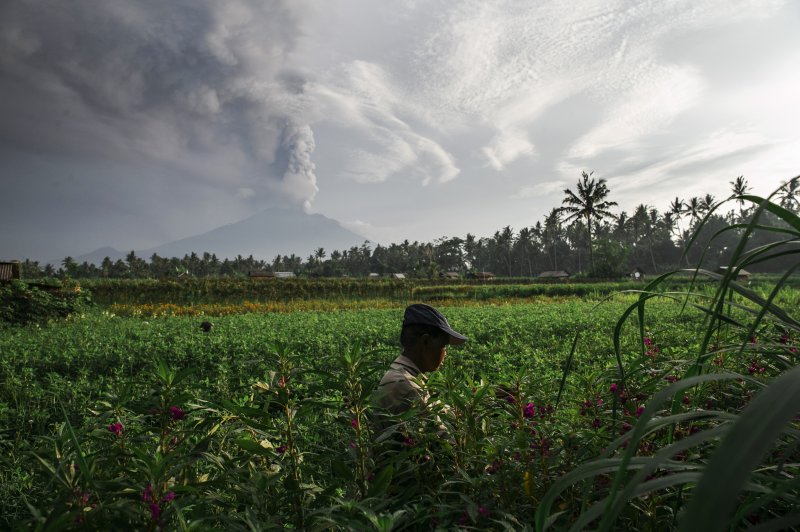Aerosols spewed by volcanos can cool temperatures by reflecting the sun's rays. But new research showed the effect can also curb crop growth by limiting the amount of solar energy available to plants. Photo by EPA-EFE/MADE NAGI
Aug. 8 (UPI) -- Geoengineering projects large enough to cool global temperatures would have significant unintended consequences on crop growth, new research suggests.
Some researchers have proposed cloud seeding and other geoengineering efforts designed to reflect sunlight and cool Earth. While cooler temperatures would protect crops from heat damage, the reduction in sunlight would inhibit growth.
Predicting the impacts of large-scale geoengineering efforts isn't easy. Without actually carrying out cloud seeding experiments, it's hard to anticipate the magnitude of the impacts on Earth's climate.
However, researchers at the University of California, Berkeley, realized Earth's volcanic past could provide clues.
"The problem in figuring out the consequences of solar geoengineering is that we can't do a planetary-scale experiment without actually deploying the technology," Solomon Hsiang, Berkeley public policy professor, said in a news release. "The breakthrough here was realizing that we could learn something by studying the effects of giant volcanic eruptions that geoengineering tries to copy."
Throughout history, large volcanic eruptions have sent massive ash plumes into Earth's atmosphere, triggering brief periods of global cooling. In 1991, for example, the Philippines' Mt. Pinatubo released 20 million tons of sulfur dioxide into the air, reducing average global temperatures by nearly 1 degree Fahrenheit and curbing sunlight by 2.5 percent.
To better understand sulfur dioxide and other aerosols impact crop growth, researchers analyzed maize, soy, rice and wheat production in 105 countries from 1979 to 2009. Scientists looked at the relationship between production levels and aerosol concentrations as measured by satellites. Climate models helped researchers scale-up the effects of aerosols on crop growth.
The calculus showed geoengineering efforts large enough to sufficiently cool Earth would depress crop yields, effectively cancelling out the benefits.
Previous studies have suggested cloud seeding efforts would scatter sunlight, allowing more solar energy to reach interior, or lower-lying, leaves typically shaded by the upper canopy, but the new models showed the scattering effect has been overestimated.
The research, detailed this week in the journal Nature, is only the latest to second-guess geoengineering proposals.
And while some studies suggest carbon storage is a viable geoengineering solution, authors of the latest study say the only sure way to avoid catastrophic warming and climate change is to drastically reduce global carbon emissions.















